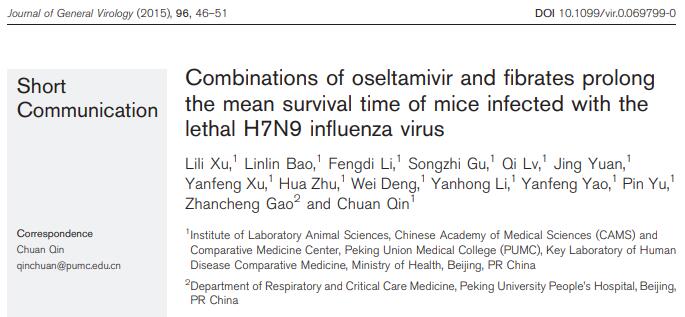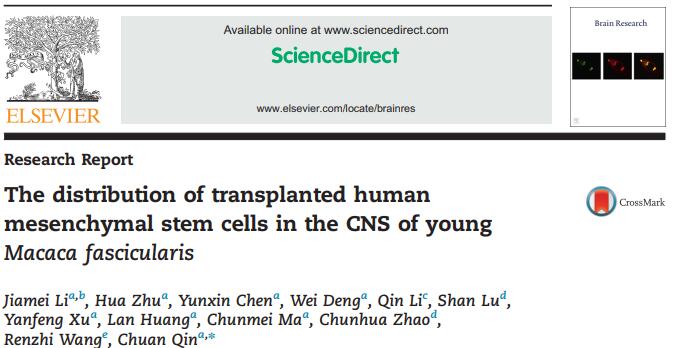-

Combinations of oseltamivir and fibrates prolong the mean survival time of mice infected with the lethal H7N9 influenza virus
DetailsThe outbreak of human infections caused by the novel avian-origin H7N9 influenza viruses in China since March 2013 underscores the urgent need to find an effective treatment strategy against H7N9 infection in humans. In this study,
-

The distribution of transplanted human mesenchymal stem cells in the CNS of young Macaca fascicularis
DetailsMesenchymal stem cell (MSC)-based therapies have generated much hope and promise as a potential source of cells for cell-based therapeutic strategies in pediatric degenerative diseases. However, the distribution and migratory routes of MSCs are unknown. Here,
-

Valproate improves memory deficits in an Alzheimer's disease mouse model: investigation of possible mechanisms of action
Details(AD) is a very common progressive neurodegenerative disorder affecting the learning and memory abilities in the brain
-

Tubastatin A/ACY-1215 improves cognition in Alzheimer's disease transgenic mice
DetailsHistone deacetylase 6 (HDAC6) is currently being discussed as a promising therapeutic target for the treatment of Alzheimer's disease (AD). Mounting evidence indicates that increased HDAC6 expression may contributeto AD-associated neurodegeneration,
-

Histopathological features and distribution of EV71 antigens and SCARB2 in human fatal cases and a mouse model of enterovirus 71 infection
DetailsEnterovirus 71 (EV71) is a neurotropic pathogen that causes hand, foot, and mouth disease. While infection is usually self-limiting, a minority of patients infected with EV71 develop severe neurological complications. In humans,
Friday November 22nd,2024 You are the 1928928 Visitors

 WeChat
WeChat